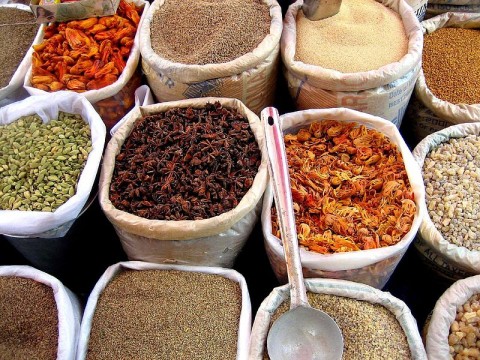Spice Trade
The Spice trade refers to the trade between historic civilizations in Asia, Northeast Africa and Europe. Spices such as cinnamon, cassia, cardamom, ginger, and turmeric were known, and used for commerce, in the Eastern World well into antiquity. These spices found their way into the Middle East before the beginning of the Christian Era, where the true sources of these spices was withheld by the traders, and associated with fantastic tales.
The trade with Arabia and India in incense and spices became increasingly important, and Greeks for the first time began to trade directly with India. The discovery, or rediscovery, of the sea-route to India is attributed to a certain Eudoxos, who was sent out for this purpose towards the end of the reign of Ptolemy Euergetes II. Eudoxos made two voyages to India, and subsequently, having quarrelled with his Ptolemaic employers, perished in an unsuccessful attempt to open up an alternative sea route to India, free of Ptolemaic control, by sailing around Africa. The establishment of direct contacts between Egypt and India was probably made possible by a weakening of Arab power at this period, for the Sabaean kingdom of South-western Arabia collapsed and was replaced by Himyarite Kingdom around 115 BC. Imports into Egypt of cinnamon and other eastern spices, such as pepper, increased substantially, though the Indian Ocean trade remained for the moment on quite a small scale, no more than twenty Egyptian ships venturing outside the Red Sea each year.
http://en.wikipedia.org/wiki/Spice_trade
Foto:

